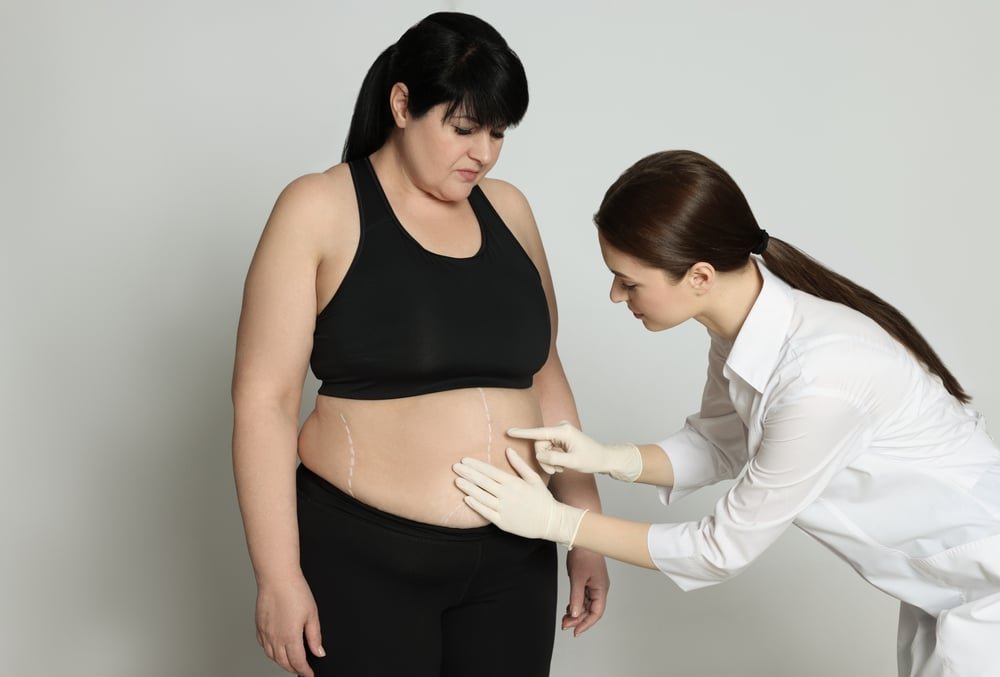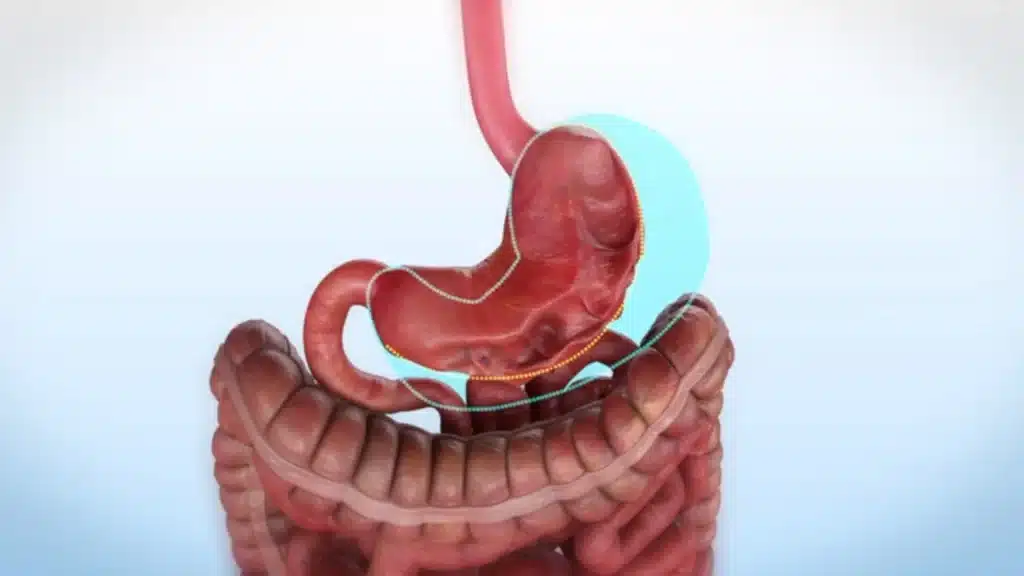Table of Contents
Endoscopic Sleeve Gastroplasty (ESG): Pre-Operative FAQs
Are you considering the Apollo Endoscopic Sleeve Gastroplasty (ESG) for weight loss? This blog post provides detailed answers to frequently asked questions about this procedure, covering its benefits, costs, pre- and post-operative expectations, and more.
What is Endoscopic Sleeve Gastroplasty (ESG)?
Endoscopic Sleeve Gastroplasty, or ESG, is a non-surgical weight loss procedure that reduces the size of the stomach by approximately 70% using using a specialized suturing device called OverStitch, without making any incisions. The procedure is performed with an endoscope, a flexible tube with a camera on the end and suturing device, which is lowered down the patient’s throat, through the patient’s mouth and into the stomach.
This allows the surgeon to see and work on the stomach in real-time through a video monitor and make precise sutures to create a sleeve-like shape, reducing the stomach’s volume by about 70%. A special suturing device, the OverStitch, is used to reshape the stomach into a small pouch. ESG aims to achieve similar results to surgical sleeve gastrectomy but with fewer risks and quicker recovery times.
How Does Apollo ESG Differ from Traditional Bariatric Surgery?
Apollo ESG differs significantly from traditional bariatric surgeries such as the gastric sleeve or gastric bypass. The key differences include:
1. Non-Surgical Approach: ESG does not involve cutting or removing any part of the stomach, which means there are no external incisions or scars.
2. Quicker Recovery: Because there are no incisions, patients typically experience faster recovery times and fewer complications compared to surgical options.
3. Outpatient Procedure: Most patients can go home the same day after ESG, whereas traditional surgeries often require a hospital stay.
4. Lower Risk of Complications: The non-invasive nature of ESG reduces the risk of infection and other surgical complications.
How is ESG Different from Surgical Sleeve Gastrectomy (VSG)?
One of the key differences between ESG and a Surgical Sleeve Gastrectomy (VSG) is that ESG is non-surgical and involves no incisions. The entire procedure is done endoscopically through the mouth. Both ESG and VSG reduce the size of the stomach, but unlike VSG, no part of the stomach is removed in ESG.
This endoscopic approach means faster healing, lower risk of complications, and a quicker return to daily activities. Additionally, ESG typically doesn’t require an overnight hospital stay; patients can usually go home the same day.

Who is a Candidate for ESG?
ESG is suitable for individuals with a body mass index (BMI) of over 30 who have not been successful in losing weight through diet and exercise alone. It can also be an initial step for patients in poor health who need to lose weight before they are eligible for more invasive surgery.
Who is Not a Candidate for ESG?
ESG may not be appropriate for individuals with certain medical conditions, such as ulcers, large hernias, bleeding disorders, or other major health issues. These conditions could increase the risks associated with the procedure.
How Long Does an Endoscopic Sleeve Gastroplasty Take?
The ESG procedure typically takes 60 to 90 minutes to complete. After the procedure, patients are monitored in their private room for 2 days for their safety and comfort before being discharged home.
What Should I Expect Before the Apollo ESG Procedure?
Before undergoing Apollo ESG, patients will typically go through the following steps:
1. Consultation: An initial consultation with a bariatric specialist to determine if ESG is the right option.
2. Medical Evaluation: Comprehensive medical evaluation including blood tests, imaging studies, and possibly an endoscopy to assess the stomach’s condition.
3. Dietary Preparation: Patients may be advised to follow a specific diet in the days leading up to the procedure to ensure the stomach is in optimal condition for suturing.
4. Pre-Procedure Instructions: Patients will receive instructions on fasting and medication adjustments before the procedure.
Endoscopic Sleeve Gastroplasty Post-Operative FAQs
What Should I Expect After the Apollo ESG Procedure?
Post-procedure expectations include:
1. Recovery Time: Most patients can return to normal activities within 3 to 5 days. However, those with physically demanding jobs may require a longer recovery period.
2. Dietary Changes: Initially, patients will be on a liquid diet, gradually transitioning to pureed foods, soft foods, and finally solid foods over several weeks. Adhering to dietary guidelines is crucial for optimal results.
3. Follow-Up Care: Regular follow-up appointments with the healthcare team to monitor progress, address any concerns, and make necessary adjustments to the diet and exercise plan.

Are There Any Risks or Side Effects Associated with Apollo ESG?
While Apollo ESG is considered safer than traditional bariatric surgeries, it is not without risks. Potential risks and side effects include:
1. Short-Term Side Effects: These may include nausea, vomiting, sore throat, and abdominal discomfort, which usually resolve within a few days.
2. Long-Term Risks: Rarely, there may be complications such as suture failure, stomach injury, or bleeding. The overall complication rate is low, typically around 1%.
When Can I Go Back to Work After ESG?
Most patients take about three days off work to rest and adjust to their new stomach size. However, those with physically demanding jobs might need a longer recovery period. The surgeon will provide specific recommendations based on the patient’s individual recovery.
How Much Weight Can I Lose With ESG?
Weight loss results vary depending on the patient’s starting weight, motivation, and adherence to dietary guidelines. Typically, patients can expect to lose between 25% to 70% of their excess body weight within 6 to 18 months post-procedure. Or in other words, on average, patients can expect to lose between 15% to 20% of their total body weight within the first year post-procedure.
Are the Sutures Permanent?
Yes, the sutures used in Apollo ESG are made from strong, durable prolene and are designed to be permanent unless removed by a surgeon.
Can the Sutures Come Loose?
Suture failure is rare, occurring in only about 1% of cases. If necessary, additional sutures can be added to address any issues.
How Many Stitches Do Doctors Use in the Stomach?
Surgeons typically use between 5 and 12 sutures along the curve of the stomach to maintain its new shape. The exact number of sutures depends on the patient’s stomach size and shape.
Do the Stitches Dissolve?
The sutures used in ESG are made from strong, durable prolene, which does not dissolve and is considered permanent unless removed by a surgeon.
What Happens to the Stitches as the Stomach Heals?
The sutures will hold the stomach in its new shape as it heals. Once healed, the stomach should remain in its reduced size as long as the patient follows the recommended dietary protocols. The stitches themselves do not pose any long-term risks.
Can X-rays or MRIs Show the Stitches?
The sutures have tiny metal caps that are visible on X-rays but do not affect MRI scans or trigger metal detectors.
What Are the Dietary Guidelines After Apollo ESG?
Post-procedure dietary guidelines are crucial for success. These typically include:
1. Phase 1: Liquids: Patients start with a liquid diet for the first week, consuming small amounts of clear liquids.
2. Phase 2: Pureed Foods: Gradually transitioning to pureed foods over the next few weeks.
3. Phase 3: Soft Foods: Slowly incorporating soft foods into the diet.
4. Phase 4: Solid Foods: Eventually reintroducing solid foods, with a focus on balanced, nutrient-rich meals.
What are the Most Common Side Effects After ESG?
Common side effects include mild discomfort, which can be managed with over-the-counter pain relievers and anti-nausea medications. Patients may also experience fatigue for about two weeks due to reduced caloric intake.
Is There a Risk of Serious Side Effects With the Procedure?
The risks associated with ESG are significantly lower than those of surgical weight loss procedures. However, as with any medical procedure, there are risks, including infection, bleeding, and stomach injury, which occur in 0.5-1% of cases.

What Will it Feel Like After the Procedure?
Patients will experience a sensation of fullness or “restriction,” similar to the feeling after overeating. This sensation will vary among patients and will ease as the stomach adjusts to its new size. Patients will initially consume liquids, then soft foods, gradually progressing to solid foods. Eating slowly and following a recommended diet is crucial for long-term success.
Are There Any Complications After the Part of the Stomach is Stitched Up?
The sutured area, known as the greater curve of the stomach, becomes thicker but maintains its blood supply. There are no long-term risks associated with this part of the procedure.
Does ESG Reduce the Level of Ghrelin Hormone Released?
Ghrelin is a hormone produced by the stomach that triggers hunger. While surgical sleeve gastrectomy removes a portion of the stomach and initially reduces ghrelin production, ESG does not remove any part of the stomach. However, the significant size reduction in the stomach means less food is needed to suppress ghrelin release.
Can I Exercise or Lift Weights After Having ESG?
Patients can start with light walking to aid recovery and gradually increase their activity level as they feel comfortable. It is important to wait until they can consume enough protein and fluids to support more strenuous exercise. Most patients are ready for intense exercise within 3 to 4 weeks post-procedure. It is important to consume enough protein and fluids to support physical activity.
Is it Safe to Get Pregnant After ESG?
Yes, it is safe to get pregnant after having Apollo ESG. In fact, weight loss can improve fertility. Patients should inform their doctor of their plans to become pregnant so appropriate recommendations can be made. It is generally advised to wait 12 to 18 months after ESG before becoming pregnant to allow the body to adjust to the smaller stomach size.
What if I Can’t Lose Enough Weight or Hit a Plateau After ESG?
Weight loss plateaus are common, even with strict adherence to diet and exercise. Patients will receive ongoing support from their healthcare provider. It is common to experience slower weight loss periods, even with strict adherence to diet and exercise. Doctors may recommend nutritional changes or weight loss medications to help overcome plateaus and maintain progress.
Can Apollo ESG Be Repeated?
Yes, the ESG procedure can be repeated to repair or tighten an existing ESG.
If ESG Does Not Work for Me, Can Apollo ESG Be Converted to a Bariatric Surgery?
Yes, if Apollo ESG does not achieve the desired weight loss results, it can be safely converted to a traditional bariatric surgery such as gastric sleeve or gastric bypass.
What Is the Endoscopic Sleeve Gastroplasty in Turkey Cost?
Endoscopic sleeve gastroplasty is not a cheap option because ot the Hi-tech and single use device and suture set costs. Also, procedure could be performed with a special endoscopy device (double channel or theurapeutic endoscope, only a few fully equipped hospitals have. ESG prices start from £11.000 in UK. We offer a full package, including VIP Airport Transfers, all comprehensive preoperative tests and consultations, OR and hospital fees, procedure, Apollo Overstitch device and suture sets, 2 days of private hospital room stays, 2 days of 5* Radisson hotel accomodation, 1 month of supplement package including protein shakes and multivitamins and dietitian followup meetings (4 session free). Current package price is £ 5750. If you don’t need any of this extra services, price can be adjusted.
Conclusion
Apollo Endoscopic Sleeve Gastroplasty (ESG) offers a minimally invasive, effective option for weight loss with fewer risks and a quicker recovery compared to traditional bariatric surgeries. Understanding the procedure, its benefits, and what to expect before and after can help you make an informed decision about whether ESG is the right choice for your weight loss journey. Always consult with your healthcare provider to determine the best treatment plan for your individual needs.
